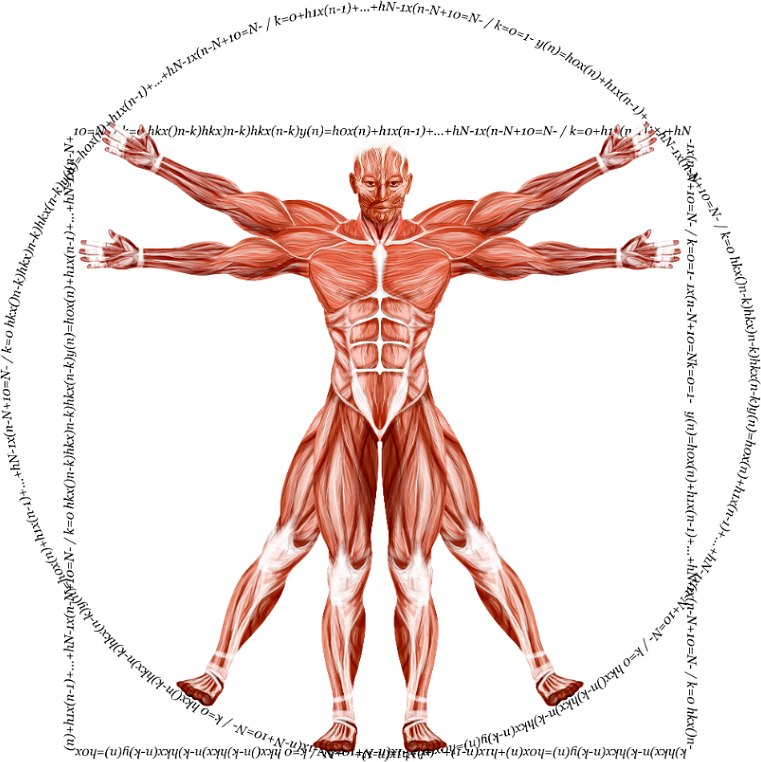Maximize Your Workout with Compound Exercises
Master the power of compound exercises to build strength, burn calories, and enhance functional fitness with movements like squats, deadlifts, and bench presses, optimized for efficiency and results.

Key Takeaways
- Compound exercises involve multiple joints and muscle groups working together.
- Benefits of compound exercises include increased strength, efficiency, and calorie burn.
- Examples of compound exercises include squats, deadlifts, and bench presses.
- Incorporate compound exercises by focusing on major muscle groups and using proper form.
- Proper form and technique are crucial for preventing injury and maximizing results.
Compound exercises are movements that engage multiple muscle groups and joints simultaneously, making them a cornerstone of effective strength training.
Unlike isolation exercises, which target a single muscle group, compound exercises require the coordination of various muscles to perform a single movement. For instance, a squat not only works the quadriceps but also engages the hamstrings, glutes, and core, creating a more comprehensive workout.
This multi-joint approach enhances functional strength and mimics real-life activities, making these exercises particularly beneficial for fitness and athletic performance.
By engaging several muscle groups at once, compound exercises allow individuals to get more done in less time, making them highly effective for those with busy schedules.
When paired with proper form and progression, they contribute to greater muscle activation and calorie expenditure during and after exercise.
While they do not directly lead to long-term hormonal changes, their ability to burn calories and stimulate muscles supports overall fitness and body composition goals.
Benefits of Compound Exercises
The benefits of compound exercises extend far beyond mere muscle engagement; they also contribute to improved functional fitness and overall health. One primary advantage is the enhancement of neuromuscular coordination and balance. These exercises help develop body awareness and stability, which is especially useful in both sports and everyday activities. Compound exercises also require more energy than isolation exercises, which increases calorie burn during the workout and stimulates metabolic activity afterward through the excess post-exercise oxygen consumption effect.
Although these exercises are not a direct substitute for dedicated cardio like running or cycling, they can elevate heart rates and improve circulation, particularly when performed at higher intensities. This increased demand on the body offers a secondary benefit to cardiovascular health. As a result, compound movements contribute to a comprehensive fitness routine when paired with activities that focus on endurance and heart health.
Examples of Compound Exercises
There is a wide array of compound exercises that individuals can incorporate into their fitness routines, with each targeting different groups of muscles. The squat is an essential exercise that primarily works the lower body while challenging the core for stability. The deadlift is another key movement that emphasizes the posterior chain, including the hamstrings, glutes, and lower back, making it highly effective for building strength in these areas. Similarly, the bench press strengthens the chest, shoulders, and arms and plays an important role in upper-body development.
Other movements such as lunges provide additional benefits by engaging the legs while improving balance and coordination. Pull-ups, a staple upper-body exercise, target the back, shoulders, and arms while developing grip strength. Each exercise can be adapted or progressed to meet an individual's fitness needs and ensure continued development.
How to Incorporate Compound Exercises into Your Workout Routine
Incorporating compound exercises into a workout routine requires thoughtful planning based on individual fitness goals and experience levels. Beginners should master proper form using lighter weights or bodyweight variations before progressing to heavier loads. Exercises like squats, deadlifts, and pull-ups are best performed at the start of a workout when energy levels are highest, allowing for better performance and reduced risk of injury. For balance in programming, lower-body exercises, such as deadlifts, can be performed on one day, while upper-body movements, like bench presses, can be focused on another.
To add variety and maximize calorie burn, compound exercises can also be integrated into circuit training or high-intensity interval training (HIIT). Alternating between movements like lunges, push-ups, and pull-ups with minimal rest helps sustain an elevated heart rate while building strength and endurance. Gradually increasing weight, adjusting repetitions, or introducing new variations helps avoid plateaus and ensures steady progress over time. Consistent practice and progression are key to successfully incorporating compound exercises into a regular workout routine.
Tips for Proper Form and Technique
Maintaining proper form during compound exercises is essential for safety and effectiveness. Understanding posture, alignment, and movement mechanics significantly reduces the risk of injury while maximizing the benefits of these exercises. For example, during a squat, keeping the chest up, shoulders back, and knees aligned with the toes helps distribute weight evenly and prevents unnecessary strain on the joints. Similarly, in deadlifts, maintaining a neutral spine and hinging correctly at the hips ensures that the movement remains safe and effective.
Practicing proper form is especially important when progressing to heavier weights. A thorough warm-up routine that includes dynamic stretches and mobility drills prepares muscles and joints for the demands of lifting and improves overall performance. Using mirrors or recording yourself while working out provides helpful feedback for ensuring proper technique. Seeking guidance from a qualified trainer can accelerate the learning process for those new to compound movements and help refine technique for more experienced lifters.
How Compound Exercises Help with Muscle Building and Fat Loss
Compound exercises are highly regarded in the fitness world for their ability to activate multiple muscle groups simultaneously, creating the conditions necessary for greater muscle development. Strength gains occur because these movements allow for heavier lifting compared to isolation exercises, stimulating both mechanical tension and adaptation in multiple muscle groups. This is particularly important for those looking to increase strength and muscle size over time.
On the topic of fat loss, compound exercises are valuable because of their calorie-burning potential and the metabolic demands they place on the body. They do not inherently "burn fat" directly, but they increase energy expenditure and can support weight loss when combined with a proper caloric deficit. By elevating the heart rate and triggering the EPOC effect, compound movements continue to promote calorie burn even after the exercise session is complete. With a well-structured program and appropriate diet, compound exercises can play an essential role in achieving fitness and body composition goals.
Common Mistakes to Avoid When Doing Compound Exercises
While compound exercises are highly effective, several common mistakes can hinder progress or increase the risk of injury. One of the most prevalent errors is lifting weights that are too heavy. This compromises form, leading to poor movement mechanics and potential injuries. Skipping warm-ups also puts the body at greater risk for muscle strain or joint stress, as muscles and joints are not adequately prepared for the intensity of the exercises.
Another common issue is rushing through repetitions without focusing on proper technique, which reduces the effectiveness of the workout. Neglecting rest periods between sets can also lead to fatigue and poor performance during subsequent lifts. Ensuring proper preparation, maintaining focus throughout the exercise, and taking sufficient time for recovery between sets are essential for maximizing the benefits of compound movements while remaining safe.
Maximizing Your Workout with Compound Exercises: A Sample Workout Plan
To effectively utilize compound exercises in a workout routine, consider implementing a structured plan that balances various movements throughout the week. A sample workout plan could include three days dedicated to strength training with an emphasis on compound movements, which are known to provide efficient, full-body stimulation.
On Day 1, focus on lower body compound lifts such as back squats and front squats, and include deadlifts—either conventional or Romanian—based on your training goal. Conventional deadlifts are typically used for overall strength and posterior chain development, while Romanian deadlifts emphasize the hamstrings and glutes and are often better suited as accessory lifts. The order of these exercises should be determined by your priority and ability to manage fatigue, with the lift most central to your progress placed first. Incorporating accessory work such as lunges or calf raises after the main lifts can further develop the legs, provided their volume and intensity are balanced with the overall weekly workload.
Day 2 could center around upper body strength with pressing and pulling movements that complement each other. Bench presses, whether flat or incline, can be paired with barbell or dumbbell rows to ensure balance between pushing and pulling. Overhead presses add direct shoulder development, and pull-ups or chin-ups are excellent for engaging multiple upper-body muscle groups. To maximize performance, arrange the heaviest or most technical lifts earlier in the session and structure rest periods so that fatigue does not compromise movement quality.
On Day 3, consider a full-body workout that combines both upper and lower body movements. Kettlebell swings can improve hip power and posterior-chain endurance, thrusters blend a squat with a press and challenge both strength and conditioning, and burpees provide a demanding full-body exercise that raises the heart rate and builds cardiovascular fitness. Because these movements generate significant systemic fatigue, it is important to manage their volume and intensity so they contribute to power and conditioning without undermining recovery. To round out the routine, add core-focused exercises such as planks or hanging leg raises, placing them after the main lifts so they enhance trunk strength without interfering with compound performance.
Incorporating rest days between these workouts allows the body to recover, but the exact scheduling should depend on training volume, intensity, and individual recovery ability. Proper recovery planning makes it possible to progress consistently without accumulating excessive fatigue. By following this structured approach, focusing on proper form, and supporting training with progressive overload, nutrition, sleep, and periodization, individuals can maximize their results while reducing the risk of injury in their fitness journey.
Building Strength, One Movement at a Time
Imagine your body as a well-oiled machine, with gears that need to work together to perform seamlessly. Compound exercises are the mechanics that keep those gears aligned and efficient, ensuring strength, balance, and coordination.
Many people mistakenly believe that targeting individual muscles is the most effective way to build strength—but this overlooks how the body operates in real-world movements.
Compound exercises address this gap by involving multiple muscle groups, improving functional strength and overall fitness. A hidden benefit of compound exercises is that they save time without sacrificing results.
By activating larger muscle groups, these exercises burn more calories and stimulate greater muscle growth compared to isolation movements.
With just a few compound exercises each week, combined with rest and thoughtful progression, you can achieve significant gains in strength and endurance—all while minimizing time at the gym.
The key takeaway is to work smarter, not harder. Compound exercises require focus, consistency, and a well-structured plan suited to your fitness goals and recovery capacity.
Whether you're lifting for strength, weight loss, or functional performance, these exercises provide unmatched efficiency and results.
If you're ready to streamline your workouts and achieve faster results, the Dr. Muscle app offers personalized automation that optimizes your routine with all the principles discussed here—and more. It's like having a top-tier trainer in your pocket. Try it free today and transform how you train.
FAQ
What are compound exercises?
Compound exercises are multi-joint movements that work several muscles or muscle groups at the same time.
What are some examples of compound exercises?
Some examples include squats, deadlifts, bench presses, pull-ups, and lunges.
What are the benefits of compound exercises?
They provide efficient strength-building, improve muscle coordination, support fat loss through increased calorie burn, and help build functional fitness.
Are compound exercises suitable for beginners?
Yes, but beginners should master proper form with bodyweight or light loads first.
How often should compound exercises be performed?
2-3 times a week is common, but it depends on individual fitness goals, recovery ability, and overall activity levels.
